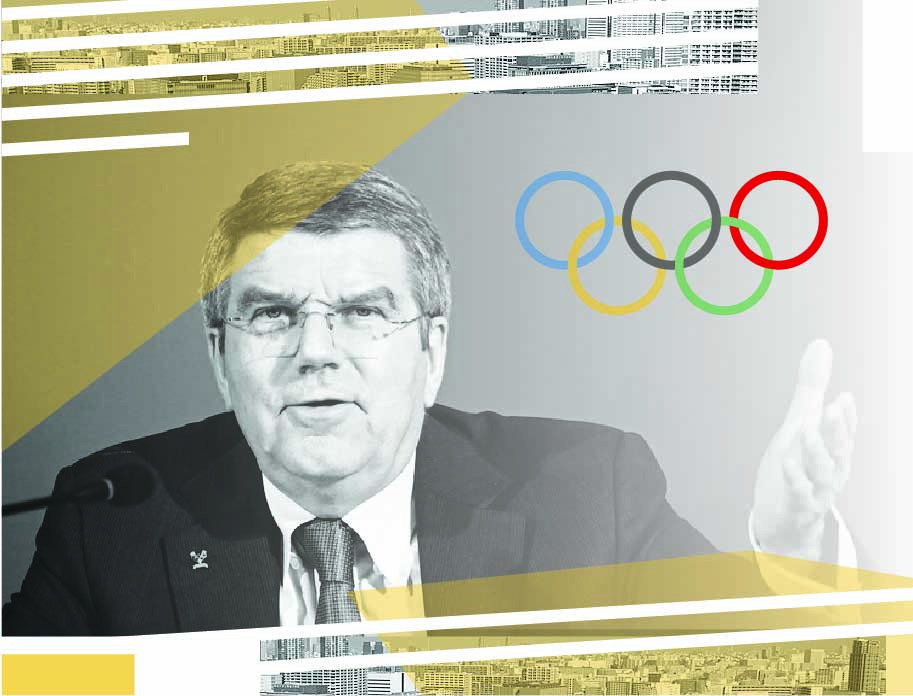
Dr Michael Mirer
Visiting Assistant Professor at the University of Wisconsin-Milwaukee. His work focuses on journalistic authority and the intersections of sport, media, and society with an emphasis on activism. Before getting his PhD, he worked for six years as a sports journalist in New Mexico and California.
Twitter @michaelmirer

Section 2: Media Coverage & Representation
- Twitter conversations on Indian female athletes in Tokyo
- ”Unity in Diversity” – The varying media representations of female Olympic athletes
- The Olympic Channel: insights on its distinctive role in Tokyo 2020
- How do we truly interpret the Tokyo Olympic ratings?
- Between sexualization and de-sexualization: the representation of female athletes in Tokyo 2020
- Reshaping the Olympics media coverage through innovation
- An Olympic utopia: separating politics and sport. Primary notes after analyzing the opening ceremony media coverage of mainstream Spanish sport newspapers
- What place is this? Tokyo’s made-for-television Olympics
- The paradox of the parade of nations: A South Korean network’s coverage of the opening ceremony at the 2020 Tokyo Olympics
- Tokyo 2021: the TV Olympics
- Why we need to see the “ugly” in women’s sports
- “The gender-equal games” vs “The IOC is failing black women”: narratives of progress and failure of the 2020 Tokyo Olympics
- Ghana: Poor local organizing, and absence of football team dampens interest
- Megan Rapinoe: The scary Bear for many Americans?
- ‘A Games like no other’: The demise of FTA live Olympic sport?
- Temporality of emotionalizing athletes
- Fandom and digital media during the Tokyo 2020 Olympic Games: A Brazilian perspective using @TimeBrasil Twitter data
- Media wins medal for coverage of athletes as people, instead of entertainers
- Media frames and the ‘humanity’ of athletes
- Reporting at a distance. Stricter working conditions and demands on sports journalists during the Olympics
- New Olympic sports: the mediatization of action sports through the Olympic Games 2020 Tokyo
- Representations of gender in the live broadcast of the Tokyo Olympics
- Americans on ideological left more engaged in Summer Olympics
- Nigeria: Olympic Games a mystery for rural dwellers in Lagos
- National hierarchy in Israeli Olympic discourses
- Equestrian sports in media through hundred Olympic years. A roundtrip from focus to shade and back again?
- Reshaping the superhuman to the super ordinary: The Tokyo Paralympics in Australian broadcasting media
- Is the Paralympic Games a second-class event?
- The fleeting nature of an Olympic meme: Virality and IOC TV rights
- Tokyo 2020: A look through the screen of Brazilian television
- Is the Paralympic Games a second-class event?
- How digital content creators are shaping meanings about world class para-athletes
- How digital content creators are shaping meanings about world class para-athletes
- The male and female sports journalists divide on the Twittersphere during Tokyo 2020
- Super heroes among us: A brief discussion of using the superhero genre to promote Paralympic Games and athletes
- “Everything seemed very complicated”: Journalist experiences of covering the Tokyo 2020 Paralympic Games
- Representing high performance: Brazilian sports journalists and mass communication professionals discuss their philosophies on producing progressive Paralympic coverage
- Representations of gender in media coverage of the Tokyo 2020 Paralympic Games
Sports journalism (during the Olympics and at any other moment) shares news from distant playing fields. But sport journalism also neatly packages societal narratives about the important values of a nation, a properly functioning social order, racial and gender differences, or personality traits worthy of admiration. This dual role – the transmission and ritual views of communication – explains how information and values are often fully intertwined. We share information (transmission), but the choice of what and how we share that information communicates social values (ritual).
American conceptions of journalistic authority emerged from obscuring of this link. Journalists claimed jurisdiction over news by asserting they could provide an unvarnished truth. But in sports reporting, the limits of this professional identity have always been clear. As sports journalists renegotiate their professional boundaries, mega-events like the Olympics offer an opportunity to glimpse evolving practices and public stances that offer ways to track the evolution of the profession in a the more open and fractious media environment of the Internet era.
Consider the case of Simone Biles, one the of the highest-profile athletes the United States sent to Tokyo this summer. Her Olympics did not go as planned. She pulled out most of her planned events citing mental health concerns before returning to win individual bronze on the balance beam. For an athlete who had seemed unbeatable, being unable to perform was a major story. An athlete emphasizing self-care over competition arguably is a full departure from American ideological consensus. Indeed, lionizing playing through pain has been part of the sporting ethic, which American sports writers have praised for generations.
Yet an initial survey of Biles’ case suggested shifting social currents. Mainstream journalists appeared to focus more on the challenges that Biles faced in her sport. Biles decision to pull out of an in-progress competition appeared to be treated as less a failure of nerve but rather an admirable assertion of her own power. The sporting press appeared to accept the idea that Biles was wise to know her limits and protect herself. It helped, of course, that Biles received broad support from her sponsors and other athletes, including Kerri Strug, who completed gold-medal winning vault on a broken ankle from 1996. What had once been seen as admirable grit was reinterpreted as abuse. Mainstream sports journalists appeared to contribute to the moving of the social consensus under their feet. Is an ideology of self-care replacing one of achievement at all costs?
The strongest criticism of Biles appeared to come from the ideological fringes. Openly partisan media figures attacked Biles on their various platforms using the language of the sporting ethic. Sport clearly remains a site for negotiating communal identity, but the subtle aspects of this may be giving way to open partisan conflict. We no longer need to dig very far to see the ideological component of sports content. This all matters because soft journalism – such as sports reporting – is often a gateway to other types of consumption. Impressions of the format and profession made here may extend to harder forms of news. The ideological role played by sports journalism speaks to identifying each other as a political community.
And how much of this phenomenon is driven by media architecture? We no longer live in a media system where athletes rely exclusively on sports journalists to convey their side of the story. This position was the ultimate source of professional authority. Biles has nearly 7 million followers on Instagram and 1.7 million on Twitter, meaning a direct line to the public. She can explain herself without a reporter contextualizing it. Biles feeling free to speak out on mental rigors of elite competition was a safer choice because she had the ability to clarify statements. More voices here enriched our understanding of her story because reporters did not rely on narrativization of fill in blanks. This direct line to the public is not universally positive, as we have seen in other cases. Perhaps the future of sports journalistic authority is in curation, sifting through athlete-produced content as much as gathering news in traditional ways.
Yet the curation role comes with its own perils. As athletes have become more assertive about their views about issues both on the field and off, simply reporting those statements verbatim has made sports journalism seem more contentious. Ideological enforcement should not necessarily be replaced by credulity. Mental health, and focus seem like an obvious place to draw out an exception; who else has a worthwhile opinion on whether Biles is in the right headspace to compete? But what other exceptions are worth carving out?

